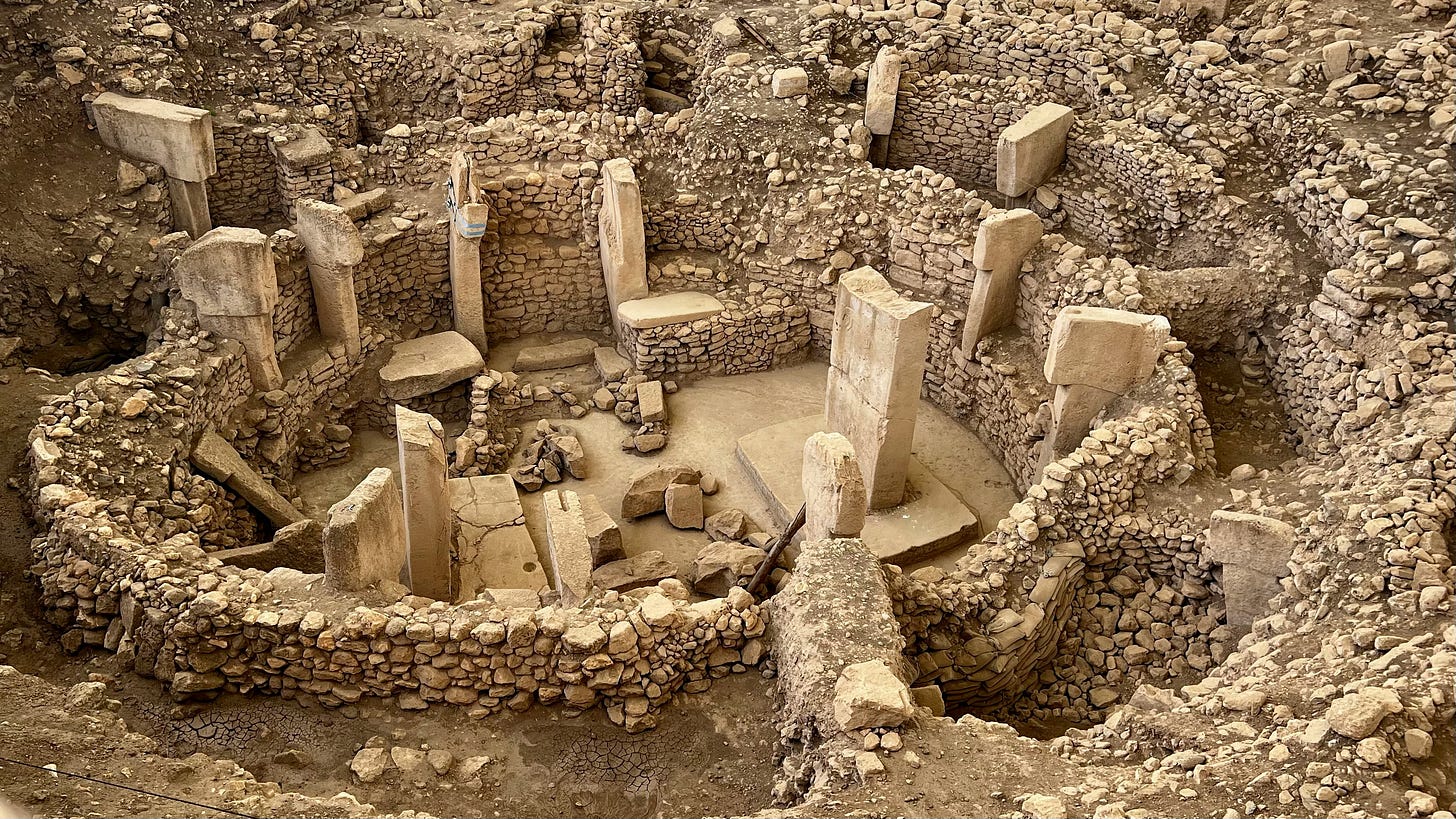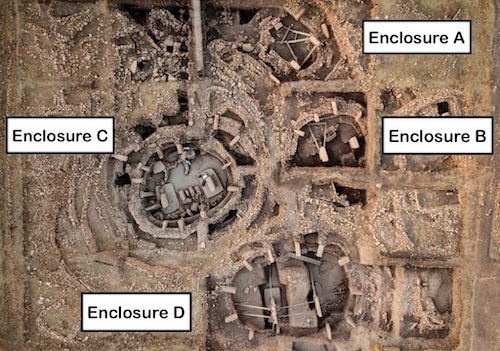
Deep in southeastern Turkey lies a site that has captivated historians, archaeologists, and curious minds for decades: Gobekli Tepe. Often referred to as the world’s oldest known temple, this ancient site—dating back approximately 11,600 years—shattered long-standing assumptions about the dawn of civilization. Yet, beyond its undeniable archaeological importance, whispers of a controversial theory linger in the shadows. Could Gobekli Tepe be the remnants of Noah’s altar, built after the flood as described in the Bible? And, more intriguingly, is this theory being suppressed because of its potential to affirm Judeo-Christian narratives about human history?
Gobekli Tepe: A Monument to the Unknown
Gobekli Tepe (meaning “Potbelly Hill” in Turkish) was unearthed in the 1990s and has since become a cornerstone for rethinking humanity’s timeline. Its towering T-shaped pillars, carved with intricate depictions of animals, appear to be the work of a sophisticated society predating agriculture. This was a time when hunter-gatherers—at least according to mainstream archaeology—weren’t supposed to be capable of creating monumental architecture.
But it’s not just the mystery of who built Gobekli Tepe that has drawn scrutiny. Some believe its function goes far beyond ritualistic gatherings of ancient hunter-gatherers. A growing number of theorists suggest it may hold the key to understanding biblical history, particularly the Genesis flood story.
The Noah Connection: Gobekli Tepe as Post-Flood Altar
The theory linking Gobekli Tepe to Noah begins with its location and age. According to Genesis, after the floodwaters receded, Noah’s ark came to rest on the Mountains of Ararat (commonly associated with Turkey). Noah and his family were instructed to repopulate the earth, and as a gesture of gratitude and devotion to God, Noah built an altar and made offerings (Genesis 8:20).
Here’s where it gets intriguing:
1. Geographic Proximity: Gobekli Tepe is located in the foothills of the Taurus Mountains, just a few hundred miles from Mount Ararat. It’s plausible that Noah and his descendants, upon leaving the ark, could have migrated to this region, where the fertile land and mild climate would support post-flood survival.
2. Timing: Radiocarbon dating places Gobekli Tepe’s construction shortly after the Younger Dryas period, an abrupt climate shift that some argue corresponds to a catastrophic global flood. The site’s estimated age aligns eerily with the biblical timeline of Noah’s flood when calculated using genealogical records in Genesis.
3. Purpose: The elaborate carvings at Gobekli Tepe depict a variety of animals, many of which are consistent with those described in the Genesis account of the ark’s passengers. Could these carvings represent a memorial to the creatures Noah preserved during the flood? Moreover, the site’s apparent focus on ritual activity supports the idea of an altar used for religious offerings.
A Controversial Silence: Why the Resistance?
Despite the tantalizing connections, mainstream academia has largely dismissed the Noah-Gobekli Tepe theory. But why? Some suggest that political, religious, and academic biases may be at play.
1. Secularism in Archaeology: Modern archaeology operates within a largely secular framework, often avoiding theories that might support religious narratives. Acknowledging Gobekli Tepe as Noah’s altar would lend credence to the biblical flood story—a prospect that could disrupt the academic status quo.
2. Theological Implications: If Gobekli Tepe were confirmed as Noah’s altar, it would be a groundbreaking discovery not just for Christianity but for Judaism and Islam, all of which share the Noah narrative. This could reignite debates about the Bible’s historical accuracy and elevate its status as a historical document rather than mere mythology.
3. Deliberate Hindrance of Excavation: Only a fraction of Gobekli Tepe has been excavated, with much of the site still buried beneath the soil. Some theorists argue that the slow pace of excavation is deliberate, driven by an unspoken fear of uncovering evidence that might validate the Noah connection.
4. Geopolitical Sensitivities: Gobekli Tepe is located in a region fraught with political tensions. Linking the site to a biblical event might further complicate relations in a predominantly Muslim country like Turkey, where acknowledging Judeo-Christian connections to sacred sites could provoke backlash.
Beyond Speculation: What Needs to Happen Next?
To date, there’s no definitive proof linking Gobekli Tepe to Noah’s altar, but the possibility merits further investigation. Here’s what needs to happen:
1. Accelerated Excavations: Currently, only about 5-10% of Gobekli Tepe has been unearthed. Fully excavating the site could reveal new clues, potentially strengthening or disproving the Noah theory.
2. Cross-Disciplinary Research: A collaborative effort between archaeologists, theologians, and climate scientists could yield a more comprehensive understanding of Gobekli Tepe’s role in early human history.
3. Open Academic Discourse: The Noah-Gobekli Tepe theory deserves a place in scholarly discussion, free from the constraints of ideological bias. Whether or not one subscribes to the theory, the questions it raises are too important to ignore.
Conclusion: A Site Shrouded in Mystery
Gobekli Tepe is undeniably a marvel of ancient ingenuity, but its ultimate purpose and origin remain elusive. The possibility that it could be Noah’s altar offers a fascinating lens through which to view this enigmatic site. Whether or not the theory holds water, one thing is clear: Gobekli Tepe forces us to reconsider the capabilities and beliefs of our ancient ancestors.
Perhaps, buried beneath the unexcavated layers of Gobekli Tepe, lies not just stone but the stories of a civilization forever changed by the cataclysmic events of their time. If the altar of Noah truly rests here, it would not only affirm a biblical account but bridge the divide between faith and science, reminding us that history often holds more questions than answers.




